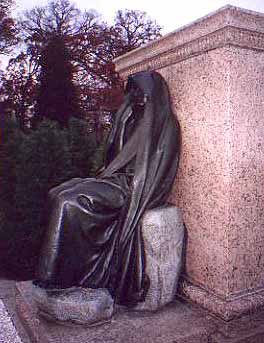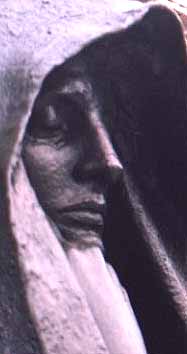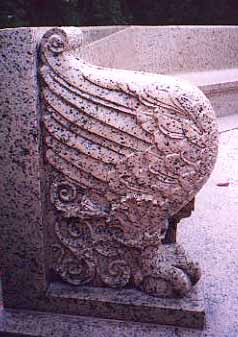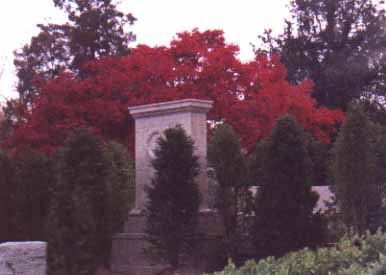Henry would refer to the statue as "the Buddha." When Adams left Saint-Gaudens' studio, the sculptor wrote: "Adams. Buddha. Mental repose. Calm reflection in contrast with violence or force in nature." Saint-Gaudens struggled with these concepts. Casting of the final figure was delayed several times. Saint-Gaudens asked Stanford White to create the setting for the statue. Saint-Gaudens had known White since the construction of Trinity Church when Saint-Gaudens worked for LaFarge on the interior decoration and White worked for H.H. Richardson on the design of the church itself. Richardson died the same year as Clover, before construction of Richardson's adjacent houses for Adams and John Hay on Lafayette Square was completed. Henry moved into the new house alone. Clover, a gifted photographer, captured the construction of the houses from the house she & Henry rented nearby. Unfortunately, neither house remains. The Hay/Adams Hotel sits on the site today. The doorway of the Hay house and the arches from the facade of the Adams house are preserved on two houses in NW DC. Mahogany paneling from the Hay house was moved to a home in NY. And LaFarge windows went to the National Collection of Fine Arts in DC and the Villa Stack Museum in Munich. |
Henry Adams commissioned the memorial two years after the suicide of his wife, Clover Adams (the former Marion Hooper) in the winter of 1884. It is believed she suffered from depression. Adams' study of Buddhism while on a trip to Japan in 1886 (with John LaFarge) caused him to request Saint-Gaudens create a figure that symbolized "the acceptance, intellectually, of the inevitable." A male model present at the time was draped in a blanket and posed to Henry's satisfaction. (The face was later modeled by a woman.) Adams left the studio saying he didn't want to see the statue until it was finished. If Saint-Gaudens had any questions, he was to speak with LaFarge. |
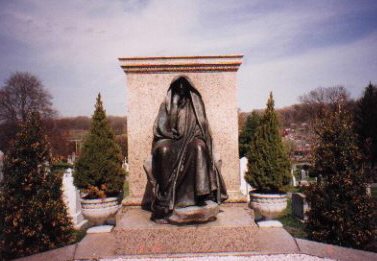
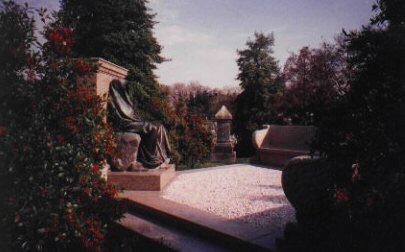
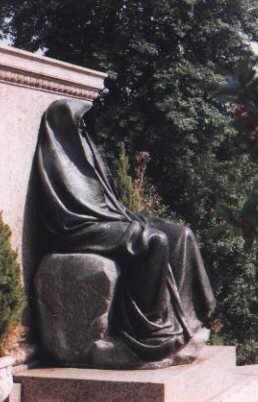
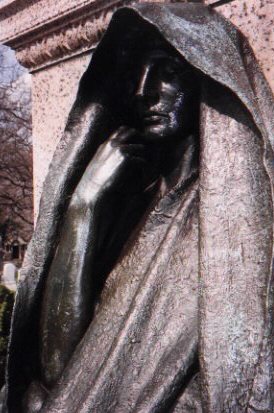
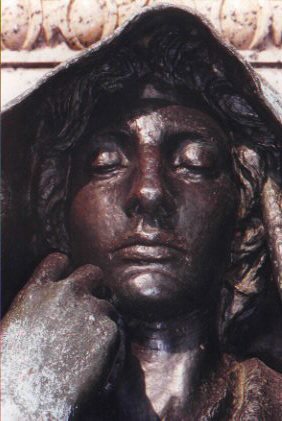
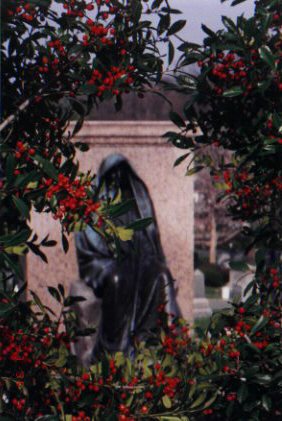
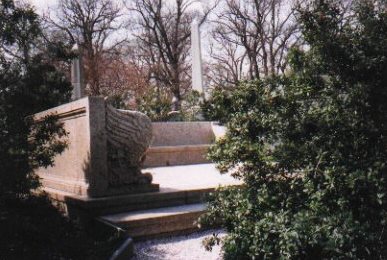
"Grief" The Adams Memorial Rock Creek Cemetery Washington, DC Augustus Saint-Gaudens Stanford White 1891 |
Henry would refer to the statue as "the Buddha." When Adams left Saint-Gaudens' studio, the sculptor wrote: "Adams. Buddha. Mental repose. Calm reflection in contrast with violence or force in nature." Saint-Gaudens struggled with these concepts. Casting of the final figure was delayed several times. Saint-Gaudens asked Stanford White to create the setting for the statue. Saint-Gaudens had known White since the construction of Trinity Church when Saint-Gaudens worked for LaFarge on the interior decoration and White worked for H.H. Richardson on the design of the church itself. Richardson died the same year as Clover, before construction of Richardson's adjacent houses for Adams and John Hay on Lafayette Square was completed. Henry moved into the new house alone. Clover, a gifted photographer, captured the construction of the houses from the house she & Henry rented nearby. Unfortunately, neither house remains. The Hay/Adams Hotel sits on the site today. The doorway of the Hay house and the arches from the facade of the Adams house are preserved on two houses in NW DC. Mahogany paneling from the Hay house was moved to a home in NY. And LaFarge windows went to the National Collection of Fine Arts in DC and the Villa Stack Museum in Munich. |
Adams first saw the memorial in photographs sent to him in Tahiti. His initial reaction was that neither Saint-Gaudens nor White understood "oriental conceptions", and that White had gone the most astray, as was to be expected. Saint-Gaudens would rather Adams had seen the memorial for the first time in person, of course. Adams' position softened after the work began receiving high praise. Many called it Saint-Gaudens' best. When Henry died in 1918 he was buried alongside Clover. There are no markers with the names of either Adams. No dates. Only the statue, the bench, and the dead. Per Henry's instructions. Henry and Clover had rarely been separated during their marriage. He never remarried. And he never mentioned her name again. Adams is known as one of the great writers of the late 19th and early 20th centuries. In "The Education of Henry Adams" is found his only reference to his wife, a single sentence in which she is not mentioned by name. Visitors flocked to the memorial and often wondered whether they were seeing a man or a woman. Adams and Saint-Gaudens insisted it was neither. There was debate over what expression the figure actually conveyed. Eventually, opinion settled upon "Grief", and it is by this name that the statue is commonly known. It is still included in guide books of the DC area. (Although, in my four visits, I saw no other visitors.) It's easy to understand why Eleanor Roosevelt came here to meditate. The enigmatic gaze of the figure changes with the light and the mood of the viewer. |
This page was last updated on: May 9, 2002
